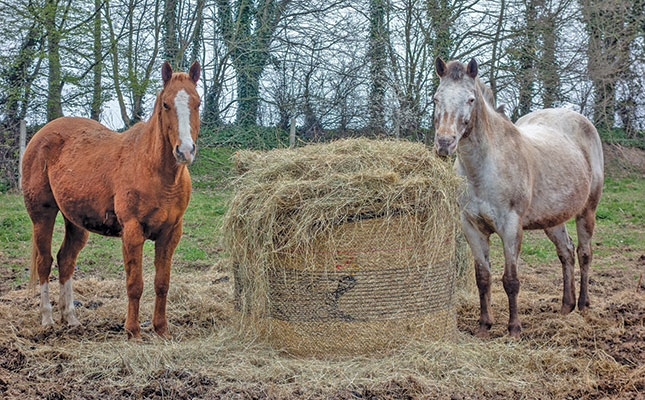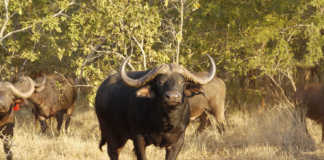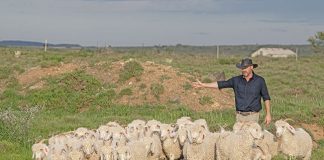
Photo: Franck Barske
Factors you will need to incorporate in your planning for feed in spring include estimating the amounts of forage required; your horse’s energy and protein needs; mineral and salt supplements; and ensuring sufficient water.
After July, the days become longer and weeds flourish. Horses that are desperately seeking roughage on the veld or overgrazed paddocks may start eating these weeds. Many of these are poisonous, such as deadly nightshade, lilies and Datura, for example.
Green grass growing on burned veld is also dangerous as it can cause acute colic. To prevent horses eating weeds, move them onto better grazing, or supplement with hay.
Hay is cheaper if bought in March or April, but may be consumed faster than planned. In this case, you may need to buy more hay when it is more expensive in August and September. You can calculate how much hay you will require if you know how much each horse needs on a daily basis.
For example, the weight of the roughage needed per day for one horse depends on its moisture content, which should be roughly 8%, and the horse’s weight, sex and age. In general, the roughage needed equals about 2% of the horse’s body weight.
Concentrates
Competition horses need a higher ratio of concentrate as they use more energy than stud or hack animals.
Broodmares, however, require a higher level of protein and minerals as they are usually feeding a foetus, as well as suckling a foal. Increasing concentrate rations without supplementing hay can lead to digestive problems and colic if grazing is not sufficient.
If your horses subsist mainly on grazing, supplement with licks rather than concentrated rations, as this may cause digestive problems.
Horses also need more salt during dry months as this aids in the digestion of dry grass and hay.
If you have a mixed herd grazing on the same pasture, supply a salt block, as each horse will consume different amounts of salt according to its needs. Minerals can also be better supplied in a mineral block or lick than in a concentrate.
Licks formulated specifically for horses are available, and horses also do well on game licks. However, some licks designed for cattle and small-stock can be dangerous as they may contain too much urea or include growth promoters that are poisonous for horses.
Providing enough water is essential, as it comprises 80% of the horse’s blood and intestinal contents, regulates body temperature and is vital for organ function, digestion, waste removal and the absorption of nutrients.
Weight, age and gender have a strong influence on daily water intake. Air temperature, relative humidity and the level of exertion are specific indicators of how much a horse needs to drink. In general, a horse will need between 13ℓ and 50ℓ a day.
Mares feeding foals, for example, will need around 50ℓ/ water a day. As surface water dries up, undesirable pollutants may become more concentrated, and you may need to move your horses and provide an alternative water source.
It’s also a good idea to measure water use so that you can truck in sufficient water for your horses if the surface and underground resources are depleted due to severe drought.
Dr Mac is an academic, a practising equine veterinarian and a stud owner.










